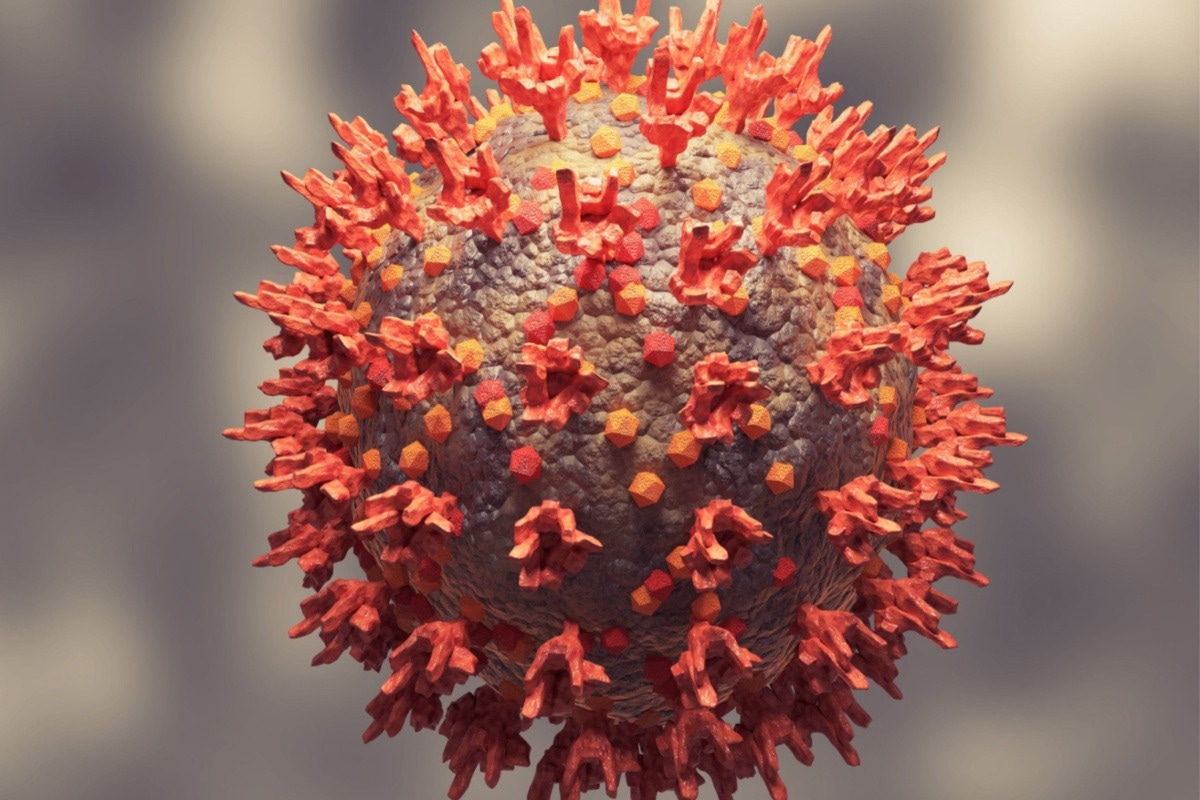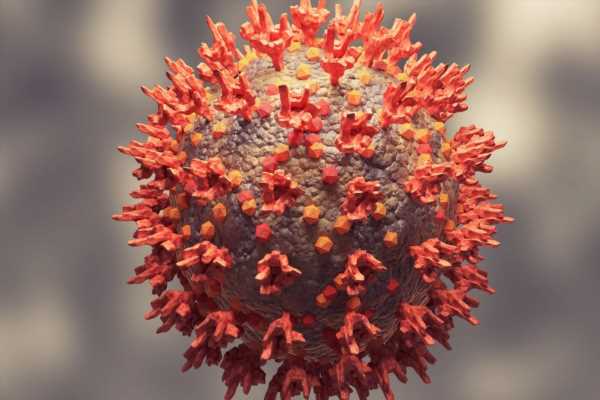In a recent study posted to the Preprints with The Lancet* server, researchers estimated the vaccine effectiveness (VE) of the primary and booster doses of coronavirus disease 2019 (COVID-19) vaccines against reinfection by Omicron BA.5 and BA.2 lineages and severe post-infection outcomes.

Severe acute respiratory syndrome coronavirus 2 (SARS-CoV-2) Omicron sub-variant BA.5 was reclassified as a variant of concern (VOC) by the European Center for Disease Prevention and Control (ECDC) on May 12, 2022. Its prevalence accounted for around 37% of COVID-19 cases in Portugal in May 2022. The Portuguese National Institute of Health estimated a growth advantage of 13% per day for BA.5, which, coupled with a doubling time of about six days, would have made it the dominant lineage in Portugal.
Background
There is a conflict between the results from animal models, neutralization assays, cell cultures, and the early vaccination risk assessment comparing BA.5 with other Omicron lineages. Due to the lack of a negative control group, any study design that quantifies the relative effect of COVID-19 vaccination against Omicron reinfections among highly vaccinated populations could prove useful.
Study design
In the present study, researchers compared the VE of primary and booster vaccination between Omicron BA.5 and BA.2 lineages. They assessed how vaccination prevented breakthrough infection from Omicron lineages and estimated lineage-specific post-infection VE against COVID-19-related hospitalization and mortality.
They implemented two different approaches. In the first approach, they compared case-to-case the odds of the COVID-19 vaccine among individuals with breakthrough infection from Omicron BA.5 and BA.2. In the second approach, they followed BA.2 and BA.5 infected groups to assess lineage-specific post-infection VE (VEp) against COVID-19-related hospitalization and death. They compared VEp only between vaccinated- and unvaccinated-infected individuals to compare the risk of severe outcomes.
The study population comprised individuals diagnosed with COVID-19 from mainland Portugal between April 25 to June 10, 2022, via a positive by reverse transcriptase-polymerase-chain-reaction (RT-PCR), with positive samples subjected to S Gene Target Failure (SGTF) assessment or whole-genome sequencing (WGS).
The team considered only samples with nucleocapsid (N) and open-reading frame 1a (ORF1a) positive signals and cycle threshold (Ct) values ≤30 for SGTF-based classification. Based on the vaccination status, the study population comprised unvaccinated individuals and those who had received complete primary and booster vaccinations.
The researchers obtained COVID-19-related hospitalization data from Integrated Hospital Information System (SONHO) registry, which captures all information from the National Health Service (NHS) hospitals in Portugal. Likewise, the National Death Certificate Information System (SICO) issues a death certificate for each individual who dies in Portugal with COVID-19 as the primary cause of death for which the International Classification of Diseases (ICD)-10 code U.071 according to the World Health Organization classification is used.
Further, the researchers performed data extraction and deterministic linkage of electronic health records with laboratory data on July 12, 2022. Also, they collected age, sex, residence, and the week of swab collection via the national surveillance system SINAVE. Furthermore, the researchers used a logistic regression model adjusted for sex, age group, region of residence, and week of swab collection to estimate the odds of vaccination.
An odds ratio (OR) estimate greater than one and one suggested that VE was lower for BA.5 lineage than BA.2 and the same for both Omicron lineages, respectively. They interpreted OR for the previous infection similarly. Lastly, the team used penalized logistic regression to reduce the bias caused by hospitalization or deaths for VEp estimates against severe outcomes in BA.5 and BA.2 cases. The OR for the lineage and vaccination status interaction measured the ratio between relative VE to prevent severe outcomes among those infected with BA.5 compared with BA.2.
Study findings
Between April 25 and June 10, 2022, there were 15,396 BA.2 cases and 12,306 BA.5 cases. Compared to BA.2 cases, BA.5 cases were slightly younger and resided frequently in Alentejo and Centro regions. Additionally, the proportion of cases with a previous COVID-19 infection was higher in BA.5 than BA.2 cases (10% vs. 5.6%). Regarding vaccination status, both groups had 4 to 5% non-vaccinated cases, but BA.5 had a higher proportion of individuals who had received primary vaccination series (20.6% vs. 15.8%), and BA.2 had more individuals who had received a booster dose (80.1% vs. 74.7%). Moreover, there were 106 COVID-19 hospitalizations and 42 deaths.
The odds of complete primary vaccination or booster dose (aOR=1.07 vs. 0.96) among the BA.5 cases were similar to the BA.2 cases, suggesting no relevant differences in VE against infection for the BA.5 lineage compared to BA.2. The authors noted higher odds of the previous infection in BA.5 cases compared with BA.2 (aOR=1.44). Combining primary vaccination and prior infection status, the estimated aOR of BA.5 was 1.70 times higher than for a BA.2 reinfection. For booster vaccination, a higher reduction in risk of hospitalization was observed either for BA.2 or BA.5, representing post-infection VE of 93% and 77%, respectively.
The interaction term that allows comparison between BA.5/BA.2 lineage VE was 3.36, suggesting reduced post-infection protection induced by booster dose against hospitalization for BA.5 compared to BA.2. The ratio of post-infection complete primary VE in BA.5 vs. BA.2 cases was 2.06 with a wide confidence interval (CI). As for booster dose, the aOR for death suggested higher risk reduction than unvaccinated for BA.2 (VEp=94%) than for BA.5 (VEp=88%), with overlapping CIs. For the death outcome, the interaction term that allowed for comparison of post-infection VE between BA.5/BA.2 lineages was 0.43 for complete vaccination and 1.98 booster dose, both with very imprecise CIs.
Conclusions
Overall, the VE against BA.5 and BA.2 infection was similar. However, the SARS-CoV-2 Omicron BA.5 lineage was associated with higher odds of the previous infection when compared to BA.2, suggesting a reduction in the protection conferred by the prior infection against BA.5 compared to BA.2. Moreover, against hospitalization outcomes, VE was lower post-BA.5 infection booster dose than post-BA.2 infection booster dose. In addition, among BA.5 infected patients, the protective effect of the first booster on reducing the odds of hospitalization outcome was higher than the primary vaccination (VEp=77% vs. 22%). Regarding death outcome, the authors estimated high post-infection VE of the booster dose for both BA.5 and BA.2 cases.
To summarize, vaccines currently used in Portugal were less effective in reducing the risk of severe outcomes for BA.5 than BA.2. The observed differences in primary vaccination and booster dose post-infection VE against severe outcomes observed for BA.5 and BA.2 lineages highlighted the significance of higher vaccination coverage in preventing severe COVID-19.
*Important notice
Preprints with The Lancet publish preliminary scientific reports that are not peer-reviewed and, therefore, should not be regarded as conclusive, guide clinical practice/health-related behavior, or treated as established information.
- Kislaya, Irina and Casaca, Pedro and Borges, Vítor and Sousa, et al. (2022). Comparative COVID-19 Vaccines Effectiveness in Preventing Infections, Hospitalizations, and Deaths with SARS-CoV-2 BA.5 and Ba.2 Omicron Lineages: A Case-Case and Cohort Study Using Electronic Health Records in Portugal. doi: http://dx.doi.org/10.2139/ssrn.4180482 https://papers.ssrn.com/sol3/papers.cfm?abstract_id=4180482
Posted in: Medical Science News | Medical Research News | Disease/Infection News
Tags: Cell, Coronavirus, Coronavirus Disease COVID-19, covid-19, CT, Gene, Genome, Hospital, International Classification of Diseases, Laboratory, Mortality, Omicron, Polymerase, Respiratory, Reverse Transcriptase, SARS, SARS-CoV-2, Severe Acute Respiratory, Severe Acute Respiratory Syndrome, Syndrome, Vaccine

Written by
Neha Mathur
Neha is a digital marketing professional based in Gurugram, India. She has a Master’s degree from the University of Rajasthan with a specialization in Biotechnology in 2008. She has experience in pre-clinical research as part of her research project in The Department of Toxicology at the prestigious Central Drug Research Institute (CDRI), Lucknow, India. She also holds a certification in C++ programming.
Source: Read Full Article
